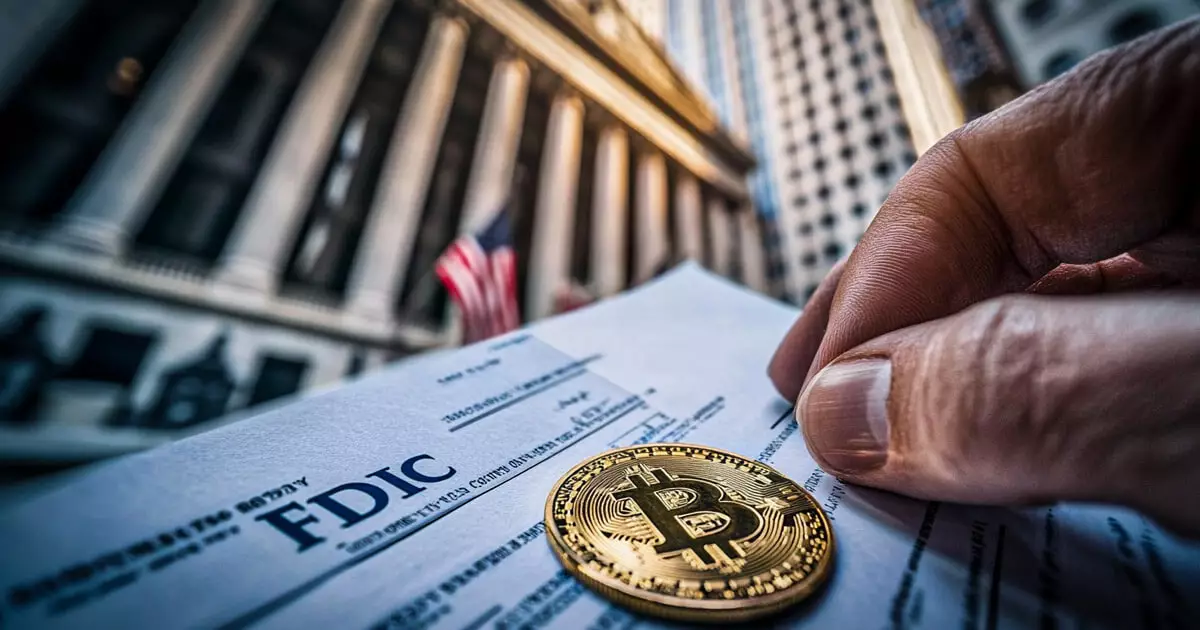In a notable turn of events, the Federal Deposit Insurance Corporation (FDIC) is poised to modify its policies governing the interaction between traditional banks and cryptocurrency, as revealed by a recent report from Barrons on February 5. This anticipated change comes on the heels of increasing demands from banks eager to delve into crypto-related services and reflects a broader trend of integrating digital currencies into the established financial framework.
The proposed revisions by the FDIC signify a pivotal transition in regulatory attitudes toward banks venturing into the world of cryptocurrency. Historically, banks seeking to explore crypto services have faced stringent regulatory barriers requiring prior approval. However, the FDIC is contemplating a new paradigm that may allow financial institutions to engage in specific crypto-related activities with minimal oversight—a development that could fundamentally reshape the banking landscape.
Reportedly, several banks have actively lobbied regulatory officials, proposing to provide crypto custody services and investigate the potential of tokenized deposits. These deposits represent an innovative approach where conventional checking accounts interface with blockchain technology, positioning tokenized currencies as viable alternatives to stablecoins. Such a shift not only reinforces the role of banks in the digital asset arena but also signals a willingness from regulators to adapt to evolving financial technologies.
On the same day as the Barrons report, the FDIC unveiled 175 documents related to its regulatory oversight concerning banks interested in cryptocurrency. This release marks a significant change in the agency’s communications strategy. The documents relate to “pause letters” issued in 2022, which advised 24 banks to suspend their crypto activities. Travis Hill, the FDIC’s acting chairman, articulated that this release demonstrates a commitment to transparency, a notable shift given the regulatory body’s historically guarded approach toward crypto-related inquiries.
The documents emerge from a Freedom of Information Act (FOIA) request initiated by Coinbase on October 18, aiming to clarify an alleged cap on deposits imposed on banks friendly to cryptocurrencies. Although the FDIC complied with the request in December 2024, much of the information was heavily redacted, leading to further scrutiny and accusations from Coinbase’s executives that the agency was concealing critical information. Paul Grewal, Coinbase’s chief legal officer, indicated that there was reason to believe the FDIC was withholding additional pause letters, creating an environment fraught with uncertainty for banks attempting to navigate these waters.
The conversations surrounding these documents reveal a sobering reality for banks striving to enter the crypto sector. Hill noted that requests from financial institutions for crypto-related services were often met with resistance from the FDIC. The agency’s prolonged silence and demands for further information created a chilling effect, leading most banks to abandon such initiatives. Grewal underscored the point that the regulatory pushback often translated into what he termed “regulation by exhaustion”—a tactic where banks were overwhelmed by incessant requests, ultimately discouraging them from pursuing crypto options altogether.
Critically, the FDIC cited various concerns as the rationale behind its cautious stance. These included Bitcoin’s price volatility, potential reputational damage to banks, and consumer protection risks associated with digital currencies. While such concerns may hold validity, they also reflect a hesitance to fully embrace the innovative potential of cryptocurrencies within modern banking practices.
Caitlin Long, CEO of Custodia Bank, has highlighted instances within the released documents that reveal the FDIC’s hesitance to engage with banking deposits linked to crypto. The consistent references to the term “deposit” in FDIC discussions signal a lingering unease regarding the convergence of traditional banking with emerging digital currencies. Long’s observations underline a critical need for ongoing dialogue between regulators and the banking sector to bridge the gap between innovation and risk management.
As the FDIC contemplates its next steps, it finds itself at a crossroads of opportunity and caution. The willingness to adapt regulatory frameworks to accommodate banks in the crypto space could yield transformative benefits for consumers and financial institutions alike. For this to occur, however, a collaborative approach that balances regulatory oversight with innovative potential must be pursued, ultimately defining the future of banking in the digital age.
















Leave a Reply